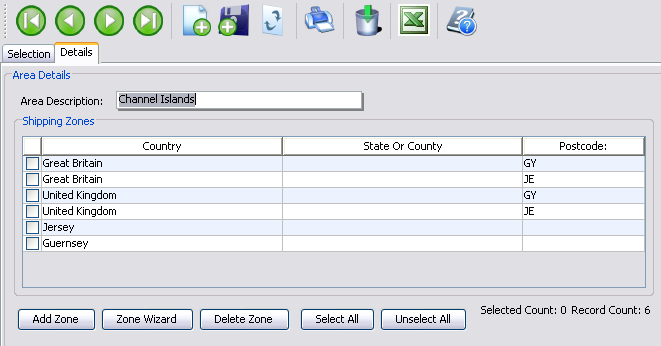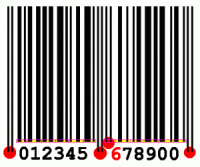5 Things You Could be Missing Out On In eSellerPro
 A little over three weeks ago I asked what you were struggling with and the larger topics I’m covering on the Podcasts we’re holding every Friday, but one of the smaller topics that you mentioned was that you’d like to know what you didn’t know for functionality in eSellerPro.
A little over three weeks ago I asked what you were struggling with and the larger topics I’m covering on the Podcasts we’re holding every Friday, but one of the smaller topics that you mentioned was that you’d like to know what you didn’t know for functionality in eSellerPro.
The following are relatively easy to set up and can save hundreds of man-hours each year. This gets deep really quickly and if you have any questions on these, just ask in the comments at the bottom or in the forums.
Note: For users of eSellerPro Lite who are in the ‘eBay Accelerated Growth Programme’, then you will still have access to the eBay templates, inventory details and also the custom fields sections, so you can use the conditional statements, but without the paragraphs. Also I’ve seen the courier rules set up with the shipping areas, so you may have access to these as well.
Using Keywords Inside Keywords & Conditional Keywords
When this first happened, it was deemed a bug. Really you should not put the keyword {{ItemDescription}} inside the description tab of a SKU and then preview or list it, what happens is that you get the description come out around 40 times.
 Not ideal, but what it indicate is that you can put a keyword inside a keyword and with a little inspiration a few years ago, this turned into a really cool feature, which when used correctly can help structure your date very cleanly.
Not ideal, but what it indicate is that you can put a keyword inside a keyword and with a little inspiration a few years ago, this turned into a really cool feature, which when used correctly can help structure your date very cleanly.
Let’s say you have a custom fields group called “Generic”, that group holds generic information about SKU’s, maybe 5 bullet points for Amazon and some other standard fields. If you add a new custom-field called “Description”, but make this custom field a list.
On the values tab for that custom fields group, you can then add values to it. If you were to add a value called “{{Insert:Description_Sofas}}” that just so happens to be a keyword, this keyword is an Insert command to bring in a paragraph block called “Description_Sofas”.
Thus if you assign this keyword in the dropdown box for the “Description” customfield on an inventory record then all you’d need to do is add {{CustomFields:Generic:Description}} to a listing template and wayhey! We now have the description contents being controlled in a custom field and completely separated from the listing template.
But that’s just simple use of custom fields, did you know you can logic test them too? I’ve written a couple of guides on these already and they should not be overlooked. You can make logic decisions if something is valid (that’s an IF clause), decide to do something if something is not valid (that’s an IFNOT) and there are other functions such as IFELSE and also a neat function to SPLIT the values in a data field.
If I’ve lost you with that last paragraph, don’t worry, read these three articles, they all have practical examples in them:
- Auto Creation of Logic Tested CustomFields in eSellerPro Using Excel
- Comma Separated Keywords Part 1 & Part 2
- How to: Add a YouTube Video to Listings Using eSellerPro
Courier Rules that use Postcode Ranges & Countries
Courier rules in eSellerPro are very powerful, but sadly sometimes they are heavily underused. These rules are business rules, that means that orders that come in with specific courier criteria may leave the warehouse with different information.
A really simple example of this is that a customer may pay for 2nd class on their order, that’s what they saw on eBay, however a business rule may be that because the order total was over £20 and in the United Kingdom then this order is automatically promoted to 1st class.
That is a simple example, but it’s because of what can be achieved through the courier rules, it has for a long, long time made me wonder why on earth people pay 12pence a pop to MetaPack, when obviously the tool you are using to process courier rules is not up to the job and MetaPack needs to step in a bridge that gap (albeit a little steep at that kind of price per package, although there is a compelling argument for redundancy in couriers and MetaPack does provide that).
Courier rules can get deep pretty quickly, so it’s always worth speaking with your implementer or support representative to work out exactly what you need, however the courier rules can be layered and you can create some complex rules that mean you can deliver your orders to customers faster and more cheaply than you ever thought possible, when you consider that you can factor in rules for the following conditions:
- Order source
- The method the buyer chose at checkout
- The order weight
- The seller ID
- The order value
- Quantity of items in the order
- Shipping value paid
- And finally the most powerful one of them all, the Shipping Area

You may be wondering why there are locations set for both United Kingdom and Great Britain and you’d be right that is a little odd, until you consider that eBay refers to the UK as “United Kingdom” and Amazon refers to the UK as “Great Britain”. Don’t let that one catch you out, I’ve already found that one out the hard way a long time ago.
You can easily create a logical process for your orders with “shipping areas” to filter through so that your orders go via the most cost and time effect paths and your staff don’t see any of the processing!
By setting up groups of locations, whether these be postcode ranges, such as BT for Northern Ireland or all the exceptions for your courier where you’re charged more. Maybe the core zones in Europe, so that your main courier say parcel Force is expensive to Euro 3 Zone, so instead you can easily switch to a different courier for that zone, or pick out a single country, such as Germany and have special rules just for that destination.
Packing Processes
This won’t suit all businesses, but the ones where it does this
will save you huge amounts of time through process control.
In short this is where orders are printed by one member of staff that manages the order queue and then using the document that is printed a special screen called the “Packing Screen” is used to process and despatch orders.
A barcode is scanned off the despatch document and that barcode is the order ID, this is then read in eSellerPro and the order contents are loaded up. Then for each line item the line item is scanned for it’s barcode and as each order line item is scanned it is removed from the order on the screen, until all the line items have been scanned.
Now we have a verified order and when this happens, with our courier rules above and assuming we have the couriers integrated in eSellerPro, you courier label will be printed. Pop the item’s in their package and slap the label on, job done, next.
Also as part of this process you can also scan barcodes, brilliant for refurbished or high value products that need the serial number recording for later verification.
Automatic Barcode Assignments
 If you have your own Barcode range from GS1, then it’s dead easy for this range to be added to your eSellerPro account and then when you send a new product to Amazon that does not have a EAN (or UPC) set, one will be automatically assigned for you.
If you have your own Barcode range from GS1, then it’s dead easy for this range to be added to your eSellerPro account and then when you send a new product to Amazon that does not have a EAN (or UPC) set, one will be automatically assigned for you.
If you’ve not got the foggy-est on what GS1, barcodes, EAN’s and UPC’s are, see this article, I explain them all.
Water-Marked Images
 The final topic that you probably didn’t know that eSellerPro could do is water mark your images automatically.
The final topic that you probably didn’t know that eSellerPro could do is water mark your images automatically.
Before we go any further on this, it can be tricky to set up and it does mean that you do need to provide eSellerPro with standard sized images, so that the watermark that comes out in the final image is uniform.
This can also be done for multiple accounts too, but does require setting up by your implementer/support.
In Summary
So there we have them, five things you probably did not know that eSellerPro could do.
From stacking keywords inside of each other and then logic testing them, to making sure that your orders go using the most cost and time effect couriers and saving a fortune by not using MetaPack, packing them in a lean and mean despatch process with barcode scanners, the auto assignment of Barcode s from your range and finally, water marking your images automatically.
If you’re struggling with something, no matter how small or if you just have a question you think I or Dave can answer, ask us in the forums here.



Leave a Reply
Want to join the discussion?Feel free to contribute!